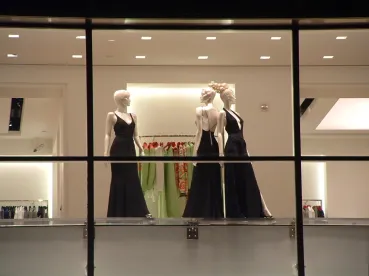Smart fabrics can be manufactured from a wide range of materials and aim to provide added value with regards to safety, comfort, or performance, especially enhancing athletic performance. Smart fabrics can include electrical conductivity, which ensures the technology can be powered while allowing them to be washed in the same manner as traditional fabrics. Smart fabrics are already being used in a broad range of potential medical, military, biomedical and athletic applications.
Smart fabrics can include materials and structures that respond to chemical, mechanical, electrical, optical, and magnetic stimuli and may also include digital components such as a battery, a sensor, an LED, or an embedded electronic chip. Smart fabrics can, therefore, focus on enhancing performance, such as regulating body temperature and perspiration, monitoring breathing and heart rate, and controlling muscle vibration. Some simpler versions of these types of fabrics already exist, from compression materials to speed athletic recovery to materials that help wick perspiration from an athlete or reduce wind resistance. The importance of the development and protection of smart fabric technology is no more apparent than in the recent case between Peloton and Lululemon, discussed in these materials and related to design patents and trade dress rights.
Future performance-enhancing smart fabrics and electronically integrated textiles (e-textiles) may, through integrated sensors, interact with the wearer’s body to sense current conditions and respond accordingly. For example, first responders may be outfitted with clothing made from fabrics that allows their vital signs to be tracked during deployment, allowing a command center to monitor the physical status of the responder. First responders showing signs of fatigue or reduced response time may be recalled from the theater of operations before a negative event occurs. These innovations could revolutionize the way that first responders, from firefighters to law enforcement to emergency medical service personnel handle any situation they may encounter. Given the nature and timing of decisions that need to be made, having reliable technologies and gear will not only keep first responders safer, but may also allow them to be able to focus more on saving lives.
The additional utility provided by a smart fabric, however, is not limited to practical concerns. It is said that style is a way to say who you are without having to speak. Smart fabrics increasingly provide fashion designers with an expanded vocabulary to help you say who you are without speaking. As an example, researchers at Fudan University in Shanghai wove electrically conductive, transparent fibers and luminescent threads together with cotton yarn to create a flexible fabric capable of serving as a durable, flexible display that is about as bright as a flat-panel television. Clothing made from such a fabric could change its color or pattern as desired by the wearer, posing novel questions for the brand owners.
It is estimated that the global market for smart fabrics was US$1.46 billion in 2020 and is forecasted to grow at rates exceeding 20% for the decade. Increasing investment to accelerate production of smart fabrics and e-textiles, rapid advancements in sensor technology, and rising adoption of these in the healthcare and defense sectors are some key factors expected to drive market revenue growth over the forecast period. But this growth will certainly come with new legal issues for this market. In addition to manufacturing regulations, fashion designers will need to be compliant with regulatory requirements such as labelling, recycling, health and product safety. Smart fabrics may also be the subject of not just brand identity and logos, but also patent and copyright protection. And for those smart fabrics that are designed to process personal data, designers and manufacturers alike will need to be mindful of data protection issues and the regulations that affect target markets, e.g. GDPR in Europe.
It’s an exciting time for designers and fashion houses as they look to innovate and respond to market desires – be fashionable and smart.



 />i
/>i
